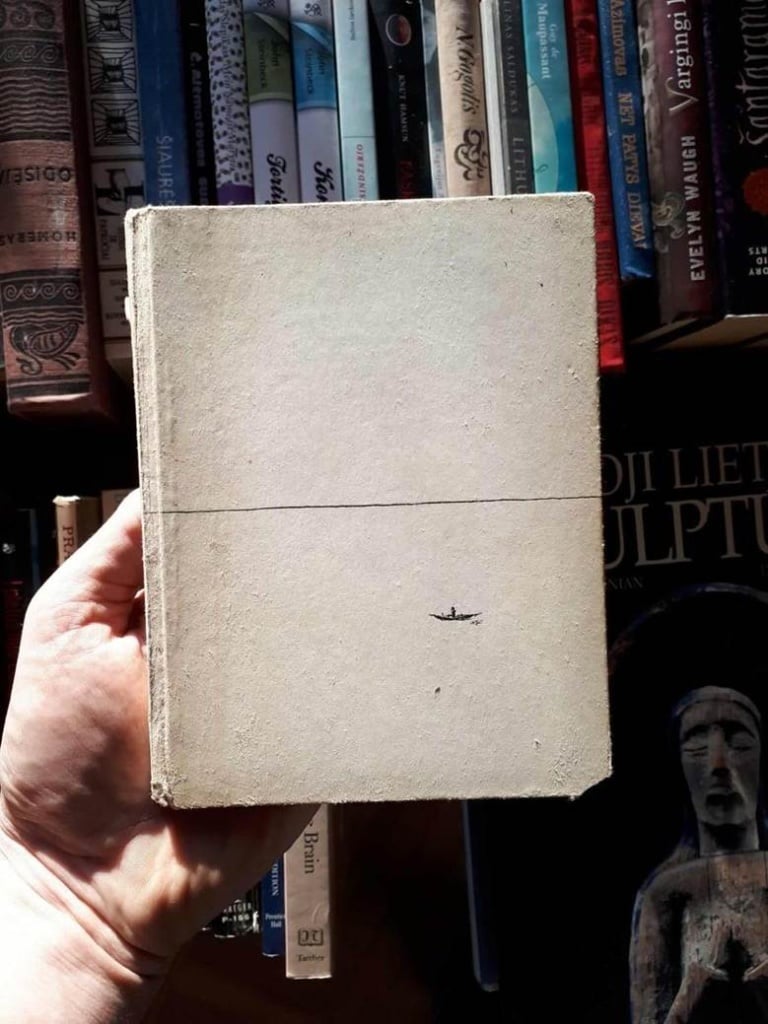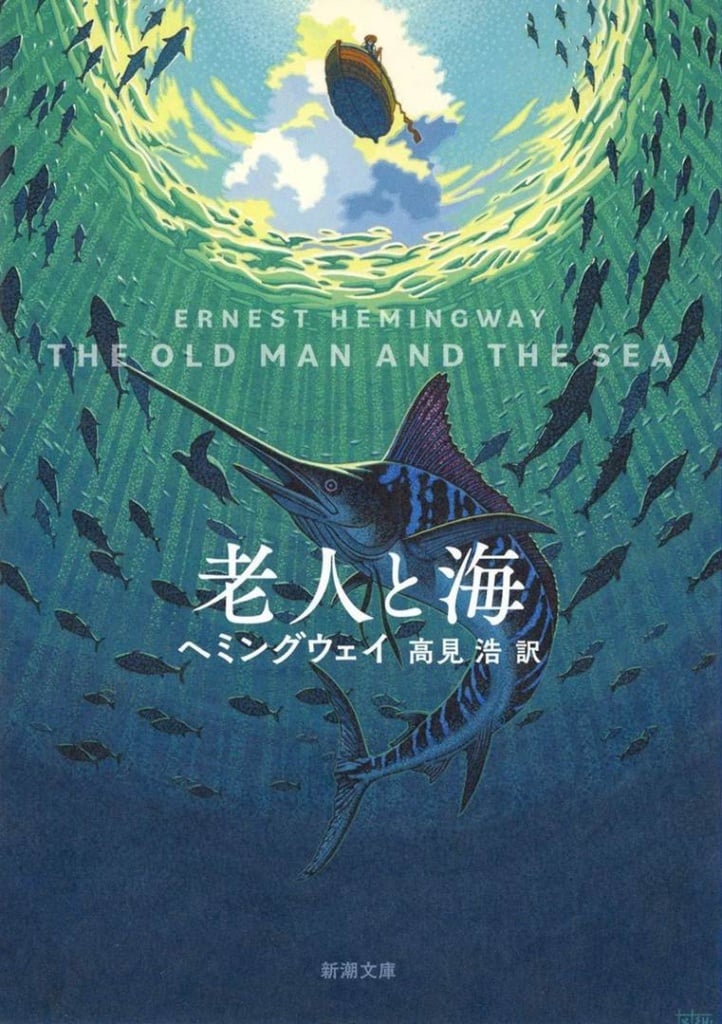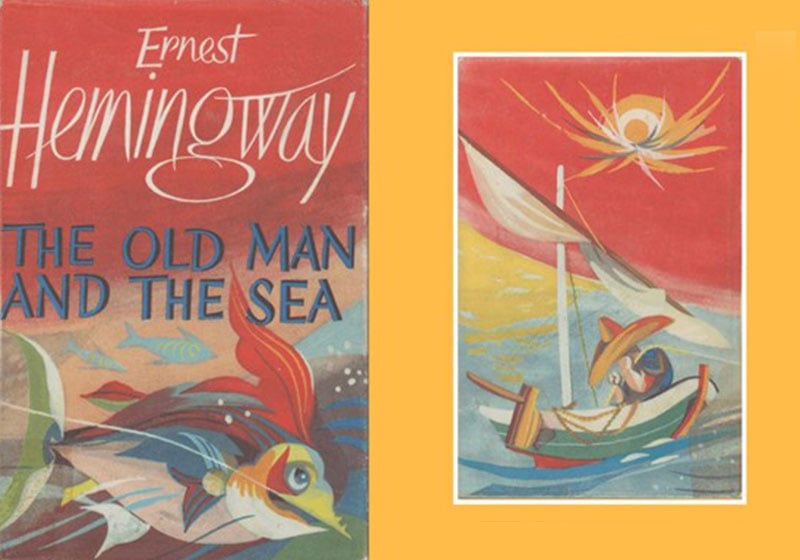Table of Contents
In the early 1950s, Ernest Hemingway, one of the most important twentieth-century American authors, was struggling. He was already an established and much-loved writer, but he hadn’t written anything new for many years, and had become mired in alcoholism.
But then his fortunes changed. Between December 1950 and February 1951 he wrote what would become his most famous, best-selling and best-loved book around the world. The Old Man and the Sea tells the story of Santiago, an unlucky old fisherman who after catching nothing for 85 days, wakes up one morning feeling like fate has something special in store. He sets off into the Gulf Stream, where a very special fish bites his line: a magnificent marlin!
After years of inactivity, Hemingway wrote the book very quickly, driven on by a new lover, the young Italian muse Adriana Ivancich. The Old Man and the Sea was first published in Life magazine on 1 September 1952, selling millions of copies in just a few days, and a few weeks later it was released in book form by Scribner. And guess who designed the cover? His beloved Adriana.
Today we’d like to tell the story behind this original cover, and review the most beautiful and interesting covers produced for Ernest Hemingway’s The Old Man and the Sea!
The first cover of The Old Man and the Sea, designed by Hemingway’s Italian muse
Ernest Hemingway wrote The Old Man and the Sea in his Cuban residence: a tall, narrow house that resembled a white tower. The American wrote on the second floor, while his lover, the young Adriana Ivancich, painted on the top floor. The cover of the book’s first edition – released in September 1952 by New York-based publisher Scribner – was designed by Adriana herself.

The cover depicts the Cuban fishing village from which Santiago sets off in search of his marlin, leaving his young disciple Manolin on dry land. Notice that a lot of the cover is taken up by the immense ocean, reflecting the book’s bitter reflection on the relationship between human beings and nature, and on the fate that no person can escape.
The most beautiful The Old Man and the Sea covers
Ernest Hemingway was already a famous author when he wrote The Old Man and the Sea, but this work – the last one published in his lifetime – won the Pulitzer Prize and helped him win the 1954 Nobel Prize in Literature.
The book was a huge success, and was republished again and again in the years that followed. Here are some of our favourite covers that appeared through the decades.

Let’s begin with two covers from the 1960s: on the left is the cover of the first paperback edition of The Old Man and the Sea, which again features old Santiago’s beach hut. On the right, meanwhile, is the cover drawn in 1953 by Charles Frederick Tunnicliffe, a renowned nature artist who created the first illustrated edition together with Raymond Sheppard.
This brightly coloured cover with a wonderfully Caribbean style, meanwhile, dates from the late 1960s: it is a UK edition, published by Jonathan Cape.

Unfortunately, we couldn’t find any information about this incredible cover from a Penguin edition of the book, embellished with outlined lettering.

Here are two late-1990s covers: one with a rather vintage feel – perhaps unsurprisingly published by Vintage Classics – and another one that is more minimalist and modern in its design.

This, meanwhile, is the brand-new cover for The Old Man and the Sea created for Scribner’s new 2020 edition.

The most striking covers for The Old Man and the Sea
The beach house, the old man Santiago on a boat in the middle of the ocean, the majestic marlin, the struggle between man and fish: many of The Old Man and the Sea‘s covers feature these elements, in one form or another.
However, we’d also like to highlight three covers with a more original graphic design. Starting with this paperback Penguin edition from 1967, which uses wavy lettering to recreate the look of the ocean.

The illustrator Emma Hopper also used special lettering for her cover, but this time the title forms the shape of the marlin caught by Santiago. As the artist herself explained, each letter was carefully created using pen and ink, before being printed and transferred onto paper using a solvent. This gave the letters an ‘aged’ effect, imbuing the design with a nautical and vintage feel, perfect for such a timeless story.

This Lithuanian edition from 1967 is a real gem. It depicts the old man’s tiny, powerless boat in the midst of a majestic, flat and infinite ocean: an imaginative design solution that perfectly captures the book’s atmosphere.

Covers for The Old Man and the Sea from all over the world
Ernest Hemingway apparently first heard the story about Santiago from some fishermen in the 1930s. Perhaps the tale’s maritime origins explain the fact that The Old Man and the Sea became an instant classic: it is a timeless and borderless masterpiece. Here we’d like to take advantage of its global popularity and sail through the book’s most exotic covers, from South America to the Far East!
Here are two old and interesting covers of The Old Man and the Sea in Spanish.

This is the cover of a recent Japanese edition: the majestic fish once again takes centre stage, but viewed from a highly original perspective.

These two Chinese editions of The Old Man and the Sea have very different covers. One keeps the original setting of the Caribbean, while in the other the colours and shape of the boat suggest a most eastern atmosphere.

Here are two Iranian covers. Once again, the approach adopted by the two artists is completely different: one of the two covers hints at the marlin’s eventual fate, while in the other Santiago’s miniscule boat can be seen reflected in the eye of the fish.

When delving into some German editions of The Old Man and the Sea, we also found two completely different approaches to the cover: one typographical, the other almost cartoonish, showing Santiago before the start of his final adventure, a rarity among the book’s myriad designs.

Here is a Brazilian and a French edition, both with a much more vintage and classic appearance.

We will end with two covers depicting the star of the story: the old man Santiago, who is forced to surrender to the strength of nature and the fate that awaits us all. The one on the left is a 1980s Lithuanian edition that also contains Across the River and into the Trees, Hemingway’s novel that preceded The Old Man and the Sea. The one on the right is from a 1960s Russian edition.

Images: juodassuo.lt; mnogobookaf.ru
Have you read and enjoyed The Old Man and the Sea, Ernest Hemingway’s final masterpiece? Do you have a favourite cover? And which of these did you like best?

